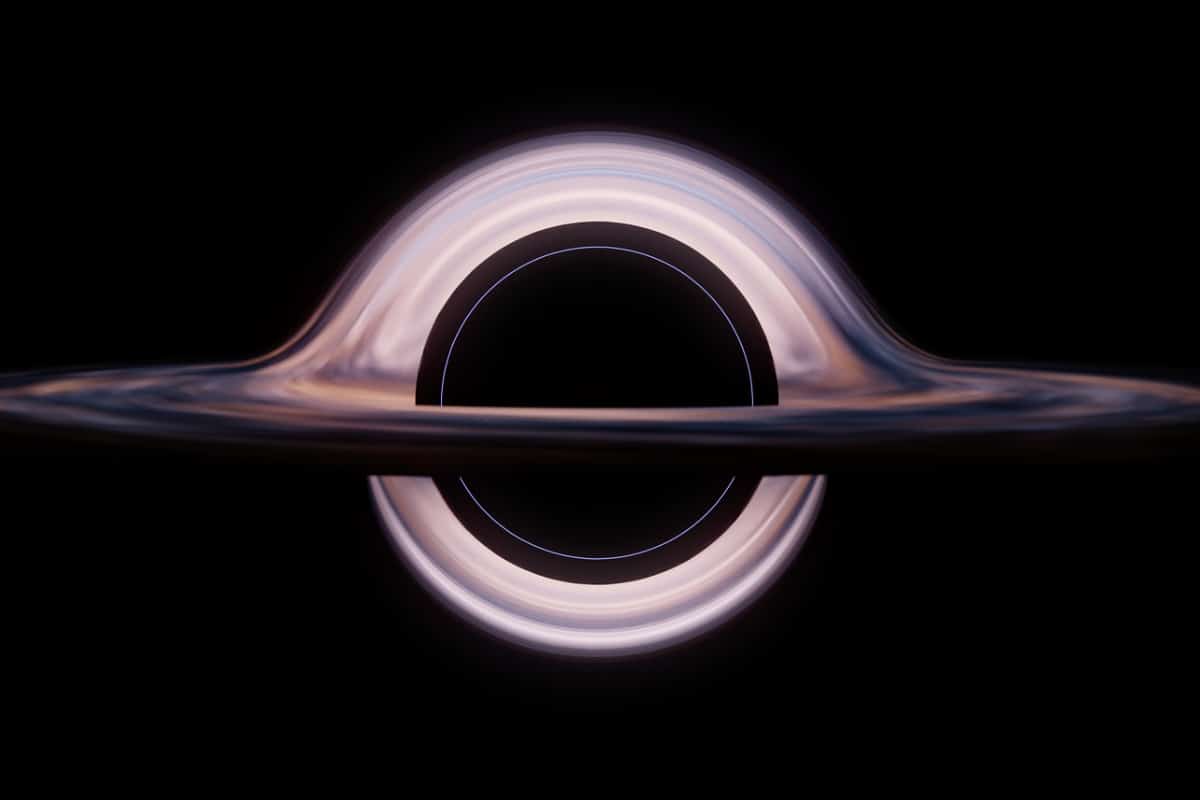
Astronomers have found indirect clues to a ‘mini-jet’ emerging from the black hole. And with that, the evidence that the black hole is regularly active is piling up.
At the heart of our galaxy we find a monstrous black hole weighing four million times the mass of our sun. For a long time, this black hole was thought to be a sleeping giant. But researchers have now discovered an insidious leak, confirming that the black hole may still be waking every now and then for a late night snack.
Leak
Using the Hubble Space Telescope, researchers have found clues to a ‘mini-jet’ – an outflow of matter – that originates from the black hole. And that would mean that the black hole at the heart of our galaxy is in a sense ‘leaking’. That ray has not been photographed directly, but indirect clues provide sufficient evidence to confirm its existence. What the space telescope was able to capture on image is a bright cloud of gas about 15 light-years away, which was presumably hit by the invisible mini-jet. This suggests that the jet weakly pushes against a huge hydrogen cloud and explodes there, similar to water from a garden hose directed at a mound of sand.
Sleeping monster… or not?
According to the researchers, this discovery is accumulating evidence that the black hole is not a sleeping monster. It probably wakes up every now and then to eat a ill-fated star or cloud of gas that unexpectedly falls into it. And whenever the black hole swallows something hefty – like a gas cloud – it emits mini-jets; particles that are blown away at almost the speed of light.

Image: NASA, ESA, Gerald Cecil (UNC-Chapel Hill), Joseph DePasquale (STScI)
The mini-jets are created by the accumulation of matter attracted by black holes in a rotating accretion disk. Some of this matter is then swept up by the black hole’s powerful magnetic fields and blown back into space. These narrow jets are accompanied by a torrent of deadly ionizing radiation.
Second copy
Incidentally, this is not the first time that researchers have encountered a jet originating from the black hole. In 2013, they also found evidence of a jet that appeared to be coming out of the southern corner. The research team was therefore curious whether there was also a northern, opposite ray. And that indeed seems to be the case. This is evident not only from the striking features of the bright cloud of gas some 15 light-years away, but also from a glowing, inflated bubble of hot gas 35 light-years away from the black hole. The researchers suspect that the black hole’s jet plowed through this gas and ‘blown up’ the bubble.
brighter
The researchers then fabricated several computer models that mimic the observations to study the outflow of jets in a simulated Milky Way disk. Because what could have been the consequence of this? Their conclusion: “Our central black hole has become at least a million times brighter in the past million years,” said researcher Alex Wagner.
The study confirms that the black hole at the heart of our Milky Way is still regularly active. The largest eruption ever occurred about two million years ago. It was so powerful that it formed an immense pair of bubbles towering over our galaxy and still glowing in gamma rays. These so-called Fermi bubbles were discovered in 2010 and can be found on either side of the heart of the Milky Way. If the newly discovered mini-jet survives for hundreds of thousands of years, it could even reach as far as these Fermi bubbles.
Source material:
“Mini-Jet Found Near Milky Way’s Supermassive Black Hole ” – NASA
Image at the top of this article: Alexander Antropov via Pixabay